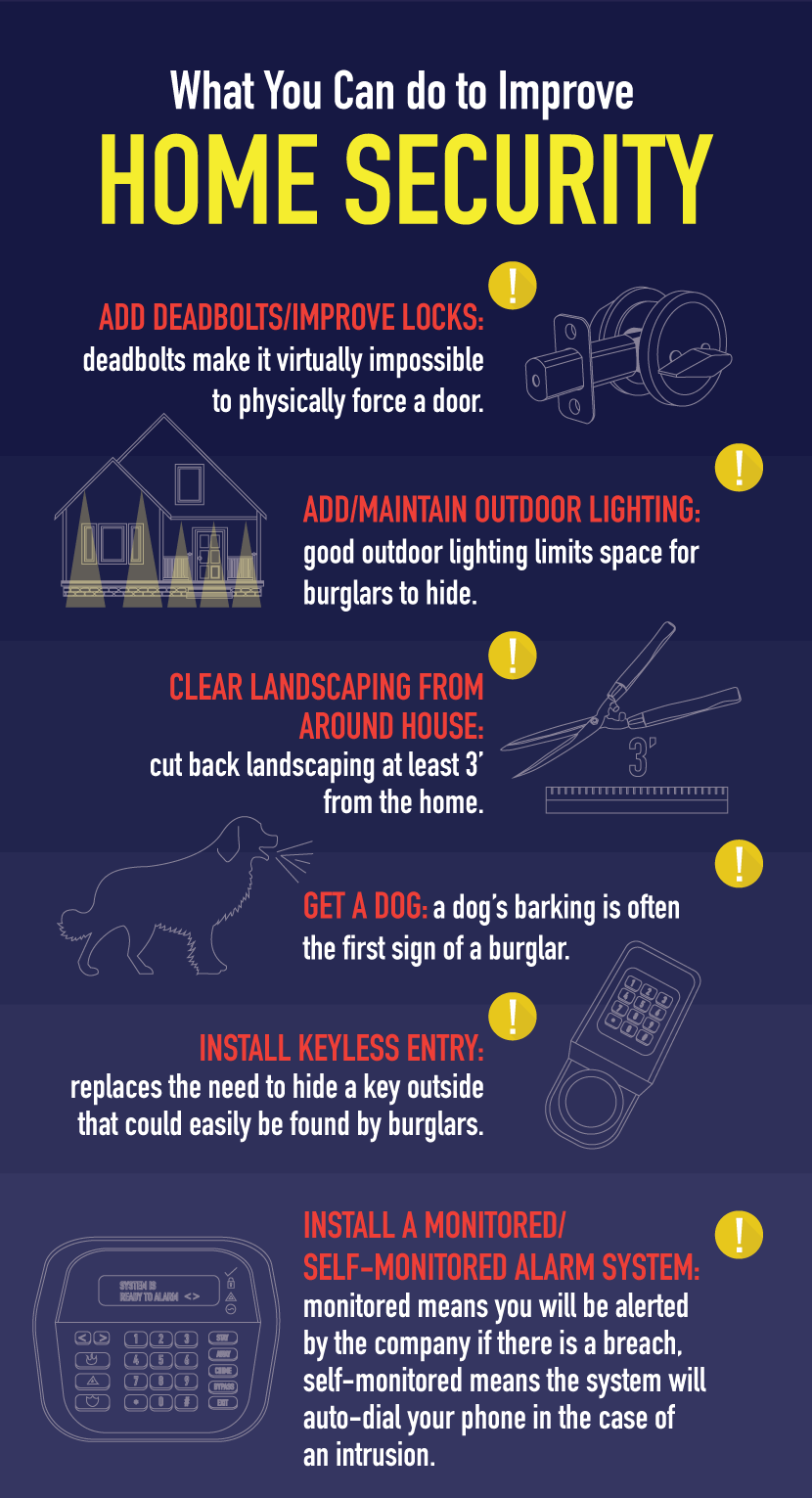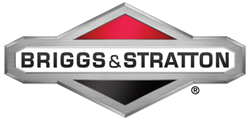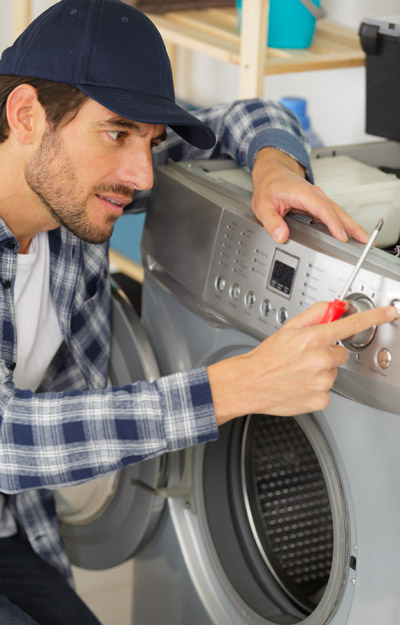Make sure you haven't got the discount earlier.

Tips for Keeping Your Home Safe
Home insecurity can manifest itself in many ways: a thump in the middle of the night, a dislodged window screen, a laptop that has mysteriously gone missing. Or it can be as blatant as running into the burglar as he or she walks through your home to steal your possessions.
We all dread home invasions. When it happens, our private spaces are turned upside-down, our goods are stolen, and our families are placed in the path of danger.
But this does not have to happen; it is not an inevitability. By incorporating a few simple do-it-yourself home safety techniques with the most critical measure of all – the reliable home security system – your house can be the one that the burglar bypasses in favor of the less prepared, less secure house down the street.
Pinpointing Your Insecure Areas

Home invasion is a highly researched topic among criminologists and runs along fairly predictable patterns. Because of this, you can make the statistics work to your advantage.
Burglars spend, on average, between eight and ten minutes in homes, and they want items that they can quickly liquidate after the invasion. Consider investing in home security to keep your items safe.
Top 5 Goods That Burglars Seek
First understanding what items burglars want is key to understanding where they want to find them:
- Cash: Loose currency laying around your home is the most valuable item to a burglar because it is the one thing that does not have to be liquidated.
- Jewelry: Jewelry can be easily pawned for cash. Roughly 68 percent of burglars report that jewelry is the second most favorite item, after cash.
- Illegal Drugs: Illegal drugs – marijuana, cocaine, heroin, and meth – can be used by the burglar, bartered, or resold on the black market.
- Electronics: Except for cell phones and laptops, most electronics are bulky and provide less interest for burglars. Only about half of burglars report that they seek electronic items.
- Prescription Drugs: Painkillers, such as OxyContin, are valued by burglars.
Most Common Burglary Entry Points
In order to gain these valuables, the burglar needs to have an entry point into your home. Convicted offenders have reported to researchers the following locations as their favorite places to get into a home:
- Front door (34%)
- First floor window (23%)
- Back door (22%)
- Garage (9%)
- Unlocked entrances and storage areas (6%)
- Basement (4%)
- Second story (2%)
Once the burglar has entered the home, he or she tends to focus on three areas. By not storing your valuables in these areas, you place an obstacle in the path of the burglar’s mission:
- Dresser drawer: Many homeowners keep jewelry on their dresser or tucked away under clothing within a dresser drawer.
- Bedroom closet: The bedroom closet is another place where homeowners tend to store cash, jewelry, furs, and larger valuables.
- Freezer: It is a long-held belief that the freezer is such an unlikely place to store cash, jewelry, or drugs that a burglar would never look there. Statistics prove otherwise. Check out these simple tips to increase your home’s security.

What You Can Do Yourself to Improve Home Security
Many do-it-yourself security techniques are quite simple and can be accomplished at a low or even no cost:
Replace Hidden Keys with Keyless Entry Systems
If you can think of a perfect place to hide a house key, a burglar has already thought of it: magnetically attached to the underside of cars, under the front mat, under real or artificial rocks, or inside the mailbox. Instead, give a house key to a trusted neighbor.
Clear Landscaping from Around the House
Bushes, trees, and ivy planted close to the house are never a good idea, as they increase moisture contact against your siding and foundation.
Invasive landscaping is doubly bad, though, as it provides an excellent hiding place for burglars trying to break into windows. Solution: cut back landscaping at least three feet from the home.
Add Deadbolts and Improve Locks
Keyed knobs or levers are easy to pick or force open. Adding a deadbolt means that the burglar now has to pick two locks – a frustration that few will take on.
Plus, deadbolts make it virtually impossible to physically force open a door. Deadbolts are available in both keyed and keyless forms.
Add or Maintain Outdoor Lighting
Intruders rely on secrecy, and good outdoor lighting obliterates that secrecy.
Hire an electrician to install exterior, motion-activated lighting high up on the sides and back of your house.
Keep those lights maintained by regularly cleaning the motion sensor (dirt and debris will render it inactive) and by changing out bulbs when they burn out.

Install Burglar Resistant Windows
Since burglars enter homes through the windows nearly 25 percent of the time, it is wise to concentrate on beefing up window security.
- Install windows with high-impact tempered glass or polycarbonate glazing.
- Add metal window grilles.
- Install additional window locks. These add-ons are inexpensive and work in concert with your existing window locks.
- Purchase and install window alarms. Cheap and simple to install, these battery-powered units emit a shrieking sound when the two halves are separated.
Video Surveillance Systems and Apps
Wi-Fi and the prevalence of the Internet has made it possible for you to literally keep an eye on your home while away.
Ranging in price between $200 and $400, self-installed video surveillance packages come with between four and sixteen exterior-ready cameras, a DVR that records several hours of video at up to 1080 pixel clarity, and a full complement of wiring.
Most systems today include access to proprietary apps and websites that allow you to observe your home from afar – all with a mobile phone, tablet, or laptop.
Your Most Powerful Weapon of All: A Home Security System
Installing a home security system is the single most important action you can take to keep your home secure from invasion.
According to research conducted by the University of North Carolina’s Department of Criminal Justice and Criminology, “[a]bout 60% of the burglars [in the study] indicated that the presence of an alarm would cause them to seek an alternative target altogether.”
The best – and most expensive – home security systems involve a combination of hardware that is professionally installed in your home plus offsite 24/7 monitoring.
Monitored Security System Features
- Hardware is installed by technicians from the company – not by you.
- Installation costs range around $100 to $200. Often, companies will run free installation specials.
- Continuous monitoring means that police will be called at any time of the day or night. You do not have to keep an eye on your home.
- Multi-year monthly service contracts are usually required. Costs range from $15 to $45 per month.
- Hardware may include window and door intrusion sensors, cameras, smoke and carbon monoxide sensors, water freeze sensors, and life safety monitors (panic and medical alert buttons).
- Cellular monitoring: This refers to systems that communicate cellularly with a monitoring station – not with a landline or broadband connection.
- Alarm warning stickers and signs.
- Representative brands: ADT, Xfinitiy, SimpliSafe, and FrontPoint.
Non-Monitored (DIY) Security System Features
Other home security systems offer self-installed hardware packages that are often on par with monitored systems’ hardware. The chief difference is that these systems are self-monitored.
- You install the hardware.
- No installation costs and no monthly service fees.
- Hardware cost: around $100 to $260.
- Expandable hardware packages that start with the basics, such as opening intrusion sensors, cameras, passive motion detectors, and key fobs to turn the system on/off. Additional items include video cameras, smoke and carbon monoxide detectors, and panic buttons.
- Auto-dials your phone in case of intrusion.
- Alarm warning stickers to display on your home.
- Often requires a landline connection.
- Representative brands: Blink, Vinker, and Fortress.
A secure home can be achieved by combining simple do-it-yourself methods with the most important method of all – a home security system.





























